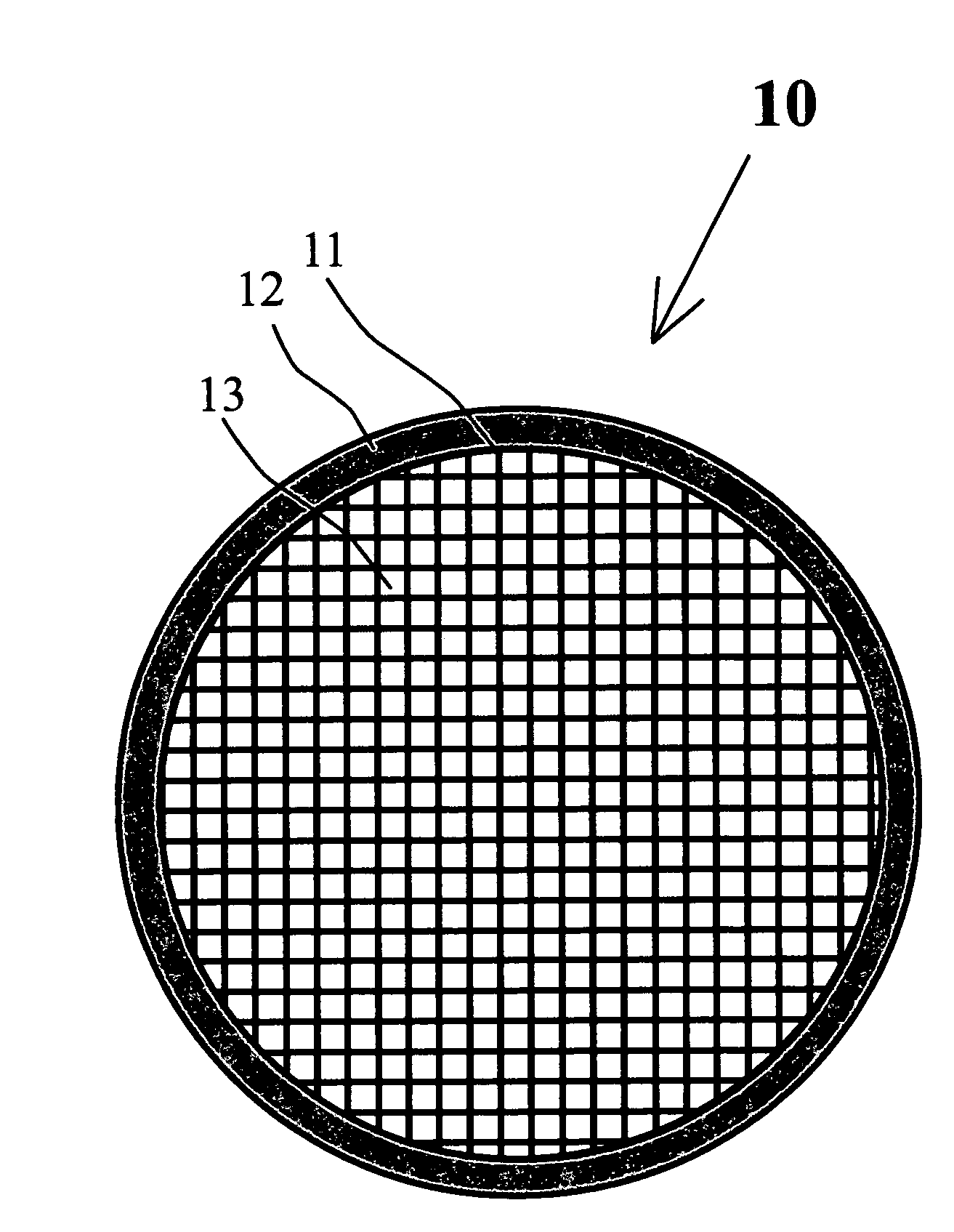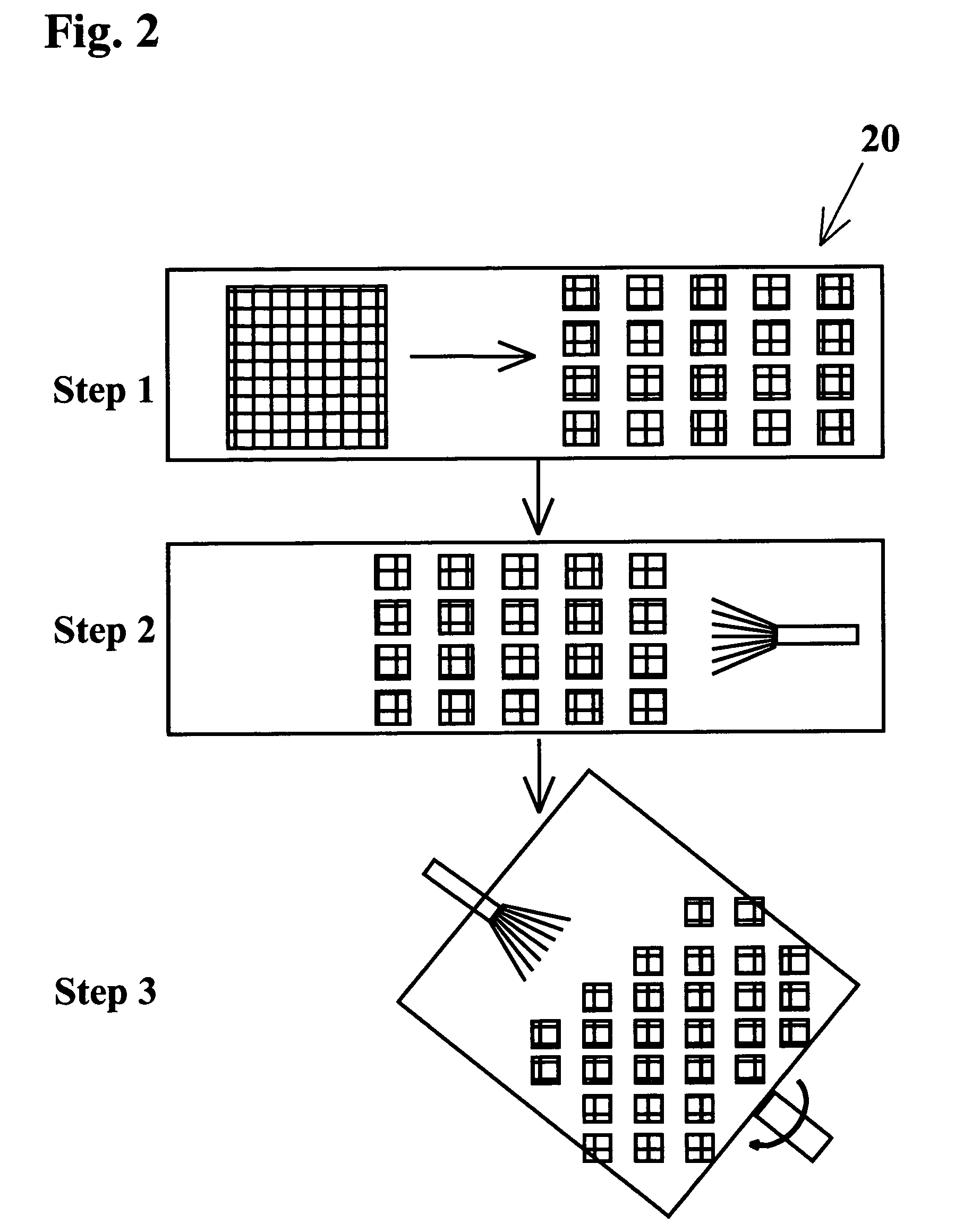Breakable active odor control additive for animal litter
a technology of additives and animal litter, applied in the field of cat litter additives, can solve the problems of difficult to control odor, ineffective against other unpleasant odors, and inability to eliminate odor, and achieve the effect of preventing the evaporation of fragrant scents
- Summary
- Abstract
- Description
- Claims
- Application Information
AI Technical Summary
Benefits of technology
Problems solved by technology
Method used
Image
Examples
example 1
[0040]Cellulose acetate open cell foam is cut to 1500 micron cubes and was saturated with Listerine mouth wash, the fragrance of which is easily recognized. A gypsum water mixture is constituted by thoroughly mixing 8 oz of water to one pound of gypsum. The Listerine saturated substrate is immersed in the gypsum water mix and is withdrawn, resulting in a uniform barrier coating. The barrier coating hardens within 20 minutes. The barrier-coated substrate is broken to release the saturated Listerine fragrance.
example 2
[0041]Cellulose acetate open cell foam is cut to 1500 micron cubes and is saturated with Listerine mouth wash, the fragrance of which is easily recognized. A 70 wt % gypsum-30 wt % soda ash water mixture is constituted by thoroughly mixing 8 oz of water to one pound of gypsum 0.43 pound of soda ash. The Listerine saturated substrate is immersed in the gypsum, soda ash, water mix and is withdrawn, resulting in a uniform barrier coating. The barrier coating hardens within 20 minutes. The barrier-coated substrate is broken to release the saturated Listerine fragrance.
example 3
[0042]Cellulose acetate open cell foam is cut to 1500 micron cubes and is saturated with Listerine mouth wash, the fragrance of which is easily recognized. Paraffin wax is melted in a metallic container. Upon being measured, the melting point is determined to be 55° C., and the melt is heated to 65° C. The Listerine saturated substrate is first dipped in a stiff mixture of 0.5 pound soda ash with 8 Oz of water and dried. The coated cellulose acetate foam is next dipped in hot wax melt and then withdrawn. The adherent wax melt layer solidifies within 3 minutes, forming the barrier coating. The barrier-coated substrate is broken to release the saturated Listerine fragrance.
[0043]FIG. 1 is a schematic diagram showing a fragrant-scented ball 10 having a central fragrance saturated porous compressible substrate 11 coated with a barrier layer 12. The central porous compressible substrate is open cell foam fabricated from polyurethane, or latex rubber or other suitable polymeric materials....
PUM
 Login to View More
Login to View More Abstract
Description
Claims
Application Information
 Login to View More
Login to View More - R&D
- Intellectual Property
- Life Sciences
- Materials
- Tech Scout
- Unparalleled Data Quality
- Higher Quality Content
- 60% Fewer Hallucinations
Browse by: Latest US Patents, China's latest patents, Technical Efficacy Thesaurus, Application Domain, Technology Topic, Popular Technical Reports.
© 2025 PatSnap. All rights reserved.Legal|Privacy policy|Modern Slavery Act Transparency Statement|Sitemap|About US| Contact US: help@patsnap.com



